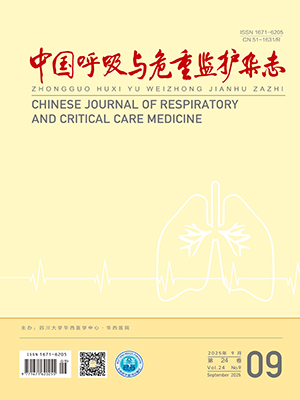| 1. |
Boyd JH, Forbes J, Nakada TA, et al. Fluid resuscitation in septic shock:a positive fluid balance and elevated central venous pressure are associated with increased mortality. Crit Care Med, 2011, 39:259-265.
|
| 2. |
Murphy CV, Schramm GE, Doherty JA, et al. The importance of fluid management in acute lung injury secondary to septic shock. Chest, 2009, 136:102-109.
|
| 3. |
Berkenstadt H, Margalit N, Hadani M, et al. Stroke volume variation as a predictor of fluid responsiveness in patients undergoing brain surgery. Anesth Analg, 2001, 92:984-989.
|
| 4. |
Hofer CK, Muller SM, Furrer L, et al. Stroke volume and pulse pressure variation for prediction of fluid responsiveness in patients undergoing off-pump coronary artery bypass grafting. Chest, 2005, 128:848-854.
|
| 5. |
Fischer MO, Pelissier A, Bohadana D, et al. Prediction of responsiveness to an intravenous fluid challenge in patients after cardiac surgery with cardiopulmonary bypass:a comparison between arterial pulse pressure variation and digital plethysmographic variability index. J Cardiothorac Vasc Anesth, 2013, 27:1087-1093.
|
| 6. |
Perner A, Faber T. Stroke volume variation does not predict fluid responsiveness in patients with septic shock on pressure support ventilation. Acta Anaesthesiol Scand, 2006, 50:1068-1073.
|
| 7. |
Wiesenack C, Prasser C, Rodig G, et al. Stroke volume variation as an indicator of fluid responsiveness using pulse contour analysis in mechanically ventilated patients. Anesth Analg, 2003, 96:1254-1257.
|
| 8. |
Muller L, Louart G, Bengler C, et al. The intrathoracic blood volume index as an indicator of fluid responsiveness in critically ill patients with acute circulatory failure:a comparison with central venous pressure. Anesth Analg, 2008, 107:607-613.
|
| 9. |
Tomicic V, Graf J, Echevarria G, et al. Intrathoracic blood volume versus pulmonary artery occlusion pressure as estimators of cardiac preload in critically ill patients. Rev Med Chil, 2005, 133:625-631.
|
| 10. |
Dellinger RP, Levy MM, Rhodes A, et al. Surviving Sepsis Campaign:international guidelines for management of severe sepsis and septic shock, 2012. Crit Care Med, 2013, 41:580-637.
|
| 11. |
National Heart Lung and Blood Institute Acute Respiratory Distress Syndrome(ARDS) Clinical Trials Network. Comparison of two fluid management strategies in acute lung injury. N Engl J Med, 2006, 354:2564-2575.
|
| 12. |
徐静媛, 刘玲, 邱海波.液体复苏对感染性休克患者继发肺水肿的影响.国际麻醉学与复苏杂志, 2011, 32:198-200.
|
| 13. |
De Backer D, Heenen S, Piagnerelli M, et al. Pulse pressure variations to predict fluid responsiveness:influence of tidal volume. Intensive Care Med, 2005, 31:517-523.
|
| 14. |
De Backer D, Taccone FS, Holsten R, et al. Influence of respiratory rate on stroke volume variation in mechanically ventilated patients. Anesthesiology, 2009, 110:1092-1097.
|
| 15. |
Vallee F, Richard JC, Mari A, et al. Pulse pressure variations adjusted by alveolar driving pressure to assess fluid responsiveness. Intensive Care Med, 2009, 35:1004-1010.
|
| 16. |
Muller L, Louart G, Bousquet PJ, et al. The influence of the airway driving pressure on pulse pressure variation as a predictor of fluid responsiveness. Intensive Care Med, 2010, 36:496-503.
|
| 17. |
Huang CC, Fu JY, Hu HC, et al. Prediction of fluid responsiveness in acute respiratory distress syndrome patients ventilated with low tidal volume and high positive end-expiratory pressure. Crit Care Med, 2008, 36:2810-2816.
|
| 18. |
Lakhal K, Ehrmann S, Benzekri-Lefevre D, et al. Respiratory pulse pressure variation fails to predict fluid responsiveness in acute respiratory distress syndrome. Crit Care, 2011, 15:R85.
|
| 19. |
徐永昊, 刘晓青, 何为群, 等.胸腔内血容量指数在感染性休克患者液体管理中的应用.中国危重病急救医学, 2011, 23:462-466.
|
| 20. |
Trof RJ, Danad I, Reilingh MW, et al. Cardiac filling volumes versus pressures for predicting fluid responsiveness after cardiovascular surgery:the role of systolic cardiac function. Crit Care, 2011, 15:R73.
|




